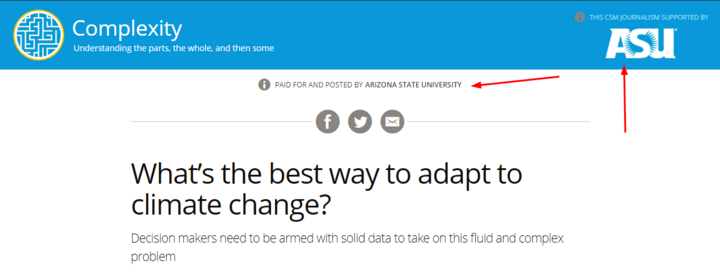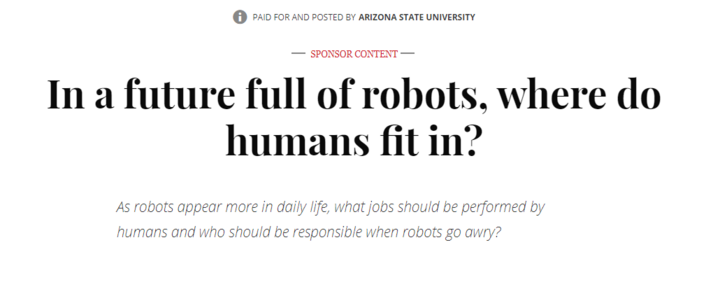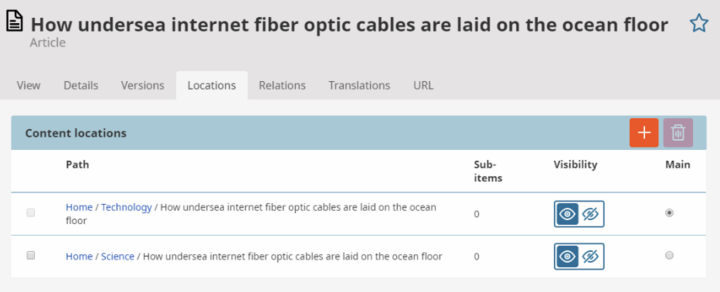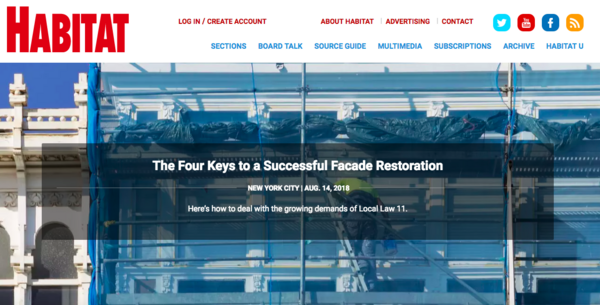Native advertising is most effective when it’s built directly into your CMS
By: Doug Plant | July 10, 2019 | Native Advertising
As traditional online ad platforms become less profitable, publishers are turning to native advertising as a high-value alternative.
Unlike display and CPC marketplaces, where inventory on your site is handled as a commodity, native advertising emphasizes your brand and specific audience as essential to an effective sponsorship. The best native advertising is produced and presented in the same context and voice as your editorial content -- it simply won’t work anywhere but your own site, with your audience. This makes native advertising incredibly valuable in building long-term relationships with sponsors.
A variety of technical solutions have emerged that promise to quickly implement native advertising in your online content channels. In this post, we’ll discuss the advantages of building native advertising functionality directly into your site’s content management system, as well as a few tactics that will make your native advertising programs a lucrative, sustainable revenue source.
Native advertising is more than just sponsored content
First off, let’s clarify exactly what we mean by the term “native advertising.”
Native advertising is an approach to sponsored content that feels and acts very much like the other content on your website.
That’s an important distinction. You can quickly add a directory of sponsored ebooks to your site, but if these content resources are tucked away in a sub-domain where no one will find them, they aren’t native advertising. Native advertising promotes itself to readers who are likely to be interested in it, across all your site pages and content distribution channels. Anywhere you talk to your readers -- email newsletters, a breaking headline app, social media -- is a prime opportunity for native advertising revenue.
This is the main reason that integrating native advertising into your CMS makes so much sense.
Third-party native advertising solutions essentially treat sponsored content promotion like a standard ad server. You just embed what amount to ad tags in a few spots on key pages -- typically article templates and the home page -- that link to content, often hosted at a third-party site that’s “skinned” to look a little like your own site. There’s little opportunity to get creative with native advertising promotion or to build custom, topical landing pages that really engage readers. (More on that a little bit later.)
In a properly architected content repository, native advertising content is structured and tagged so that it can be promoted in the same channels as non-sponsored content. Related content elements and landing pages are just the start. Content syndication feeds, video playlists, your home page’s main content carousel -- native advertising content should readily publish to all of these channels, and in any new online experience that you just haven’t dreamt up yet.
You can’t do that with third-party embed tags.
Native adverting as valuable content
A great example of a feature-rich native advertising experience are the topical hubs that we developed with our client, The Christian Science Monitor.
In one example, The Monitor created these landing pages in conjunction with Arizona State University, which during the term of a specific sponsorship contract had dominant brand exposure (a logo in a custom page header and other messaging) on pages in a sponsored section.
The Complexity section publishes both sponsored content and non-sponsored content that fits the central topical theme. Native advertising content also presents itself in search results and other pages in the site, alongside non-sponsored content.
Native advertising is clearly marked as such, but it’s still presented as being of value to The Monitor’s readers -- which is really the key point. Your readers will find value in native advertising, if it’s executed correctly.
Native advertising content always notes that it was created as part of a sponsorship.
The Monitor’s landing pages are designed to drop the premiere brand sponsorship after a contract is up. (Such sponsorships are often an integrated buy of both native and display advertising, the latter being executed by an ad server.) But the native advertising content continues to be live, based on the rules and attributes we’ve built for it in the site’s CMS and production layer.
Native advertising content continues to publish in site channels after an active sponsorship program completes its run.
Because the content is structured properly, it continues to be accessible via site search and other “native” use models, always noting that it was created as a piece of sponsored content. And from a technical standpoint, this obviates issues with 404 and link redirection, as well.
Tips for architecting your CMS and site for native advertising
When our team at Mugo Web architects a content repository and workflows for publishers, we’re sure to address these issues relating to native advertising.
A Sponsor content object
As we’ve said, native advertising is a form of sponsored content, and as such needs to know who is sponsoring it. We suggest creating a distinct content object that defines a Sponsor and associating it to native advertising content, as opposed to simply using a flat tag.
Such Sponsor content objects can include items such as brief descriptions of the sponsor and logos that are appropriate for various display channels. (You will want to visually denote that the native advertising content is sponsored, and advertisers love to see their logo. Just make sure the design uses them tastefully.)
Sponsor content objects can be associated to any type of content, such as articles, blog posts, videos, audio, and downloadable ebooks. In fact, we typically consider an association with a Sponsor object as the defining attribute of sponsored content. This makes it unnecessary to build specific content types for sponsored articles, and ultimately makes your content more portable.
Sponsor content objects also make it easy to build out landing pages devoted specifically to all content provided by a sponsor. These “sponsor hubs” can be particularly attractive in B2B publishing, where a single sponsor may be associated with articles, videos, podcasts, and lead-generating content downloads. We’ve even built such hubs that publish social media feeds operated by the sponsor.
Managed promotion of native advertising items
As you saw in our example from The Christian Science Monitor, native advertising is often launched on your site as part of an elevated sponsorship contract that eventually expires. During these periods, your site pages and other content channels may need to emphasize certain pieces of native advertising content more aggressively than when associated sponsorships expire.
For example, a sponsored video may need to appear in the home page video element for an extended time period, well beyond the point when a purely editorial video would have moved down the first-in, first-out publishing queue.
You may also need to build in tracking via your analytics tools to count how often a piece of native advertising content is promoted on key pages, to meet sponsor demands, and gauge how to use other “push” promotional channels -- such as email -- to expose readers to that content. (After all, they are advertising, and sponsors will ultimately want to know that their content is being promoted and read.)
Easy re-usability
You’ll want to be able to quickly publish native advertising in any section or landing page where it’s appropriate, particularly if you operate multiple sites. The eZ Platform CMS, which we use for most of our site projects here at Mugo Web, has a simple interface for adding multiple locations where native advertising content will promote itself.
This can be particularly valuable in use cases such as sponsored topical content landing pages. Let’s say an advertiser wants to include a new series of posts on the hub that reflect a changed market position or value proposition for their services. Your team can simply add the landing page as an additional location for the new native advertising content and remove older sponsored content from the location.
The older content will continue to present itself in search and other appropriate channels -- just not in that specific landing page location.
eZ Platform locations also work across multiple domains in multi-site implementations of the CMS, making it an ideal platform for managing native advertising content across a publishing network.
Topical and audience metadata
As with any other content, your CMS needs to know exactly what a piece of content is about and (particularly for B2B publishers) who it is intended for. A good rule of thumb is that any piece of native advertising content should have all the same metadata associated with it as editorial content.
Strong CMS user permissions
Publishers tackle the creation of native advertising content differently, based on their market and publishing philosophy. Some employ content creators who work with sponsors to craft content that matches the voice of their publication; others simply take submissions from sponsors and then process them.
Some publishers also offer what’s sometimes called “underwritten” content promotions, where a sponsor gets to pick the topic for a series of articles and reports but does not directly produce or vet the content itself. These kinds of promotions usually center on display advertising roadblocks and other page- and channel-level sponsorships, and may or may not include content items approved by the sponsor. It’s still an evolving market, and each publisher tackles it a little differently.
Whatever the case, your CMS needs to enforce strong permissions to ensure that native advertising and sponsored content is never published as editorial content, inadvertently or otherwise. This can happen (usually by accident), and when it does is puts your credibility as a publisher at risk.
Our team at Mugo Web often creates a site tree in the eZ Platform CMS that has user permissions specific only to those team members who create sponsored content. In addition, establishing an association to a Sponsor object as the defining attribute of sponsored content makes it relatively easy to prevent users from accidentally publishing native advertising as a regular article -- it’s just one field on an editing form to modify.
Native advertising is here to stay
As you can see, native advertising has established itself as a key revenue stream for online publishers, and it continues to evolve. Building native advertising functionality directly into your CMS enables you to present sponsored content in a way that’s contextually relevant and useful to your audience, and positions you to quickly react to new revenue opportunities.
We’d love to learn more about your native advertising needs and goals. Contact us today to discuss your project!











